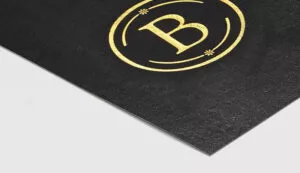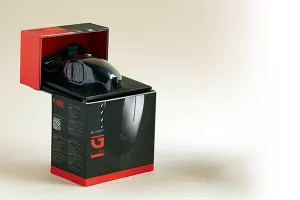I often worry about how my products look when they arrive. I want to protect them, but I also need packaging that grabs people’s attention.
Custom shipping boxes can elevate a brand, protect items more effectively, and reduce damage-related costs. They combine safety with style, creating a memorable unboxing experience.

Let’s explore why custom shipping boxes might be worth the investment. We’ll check their benefits and see if they can save money or add extra costs when shipping products.
What are the benefits of custom boxes?
Sometimes I wonder if generic boxes are hurting my brand image. I realize I might be missing opportunities to stand out.
Custom boxes provide brand visibility, add protection, and improve unboxing experiences. They also enhance loyalty by making a memorable first impression.

The advantages of custom boxes begin with branding power. When I create a box that matches my company’s color palette and style, I turn every shipped package into a marketing opportunity. Instead of a plain cardboard container, the box arrives at the customer’s doorstep with a clear statement of who I am. This helps build brand recognition over time, especially if I run an online store or subscription service. Customers might even share photos on social media, effectively advertising my brand at no extra cost.
Another benefit is the improved protection that a well-designed özel kutu can offer. I can ensure the box dimensions closely match the product, leaving minimal wasted space. This helps reduce shifting inside the package, leading to fewer breakages. It also saves me money on filler materials like bubble wrap, packing peanuts, or air pillows. Those fillers add up quickly, especially if I ship a high volume of goods each month. An optimal box size can lower shipping weight, which affects the final shipping price.
User experience also matters. An appealing, sturdy box can enhance the unboxing moment. That’s important because the unboxing step influences how a customer perceives quality. If they open a carefully designed box that’s easy to handle, it builds excitement. This experience encourages repeat purchases. Meanwhile, receiving a battered or flimsy container can make the buyer question the product’s overall value. If I want my business to be remembered for all the right reasons, custom packaging helps me control that impression.

I also consider environmental factors. Many custom box manufacturers can produce eco-friendly packaging, made with recycled or biodegradable materials. I can pick responsibly sourced paper or soy-based inks for printing. These choices align my brand with sustainable practices, appealing to consumers who value greener solutions. Because I can tailor the size of the box more precisely, I end up shipping less air, saving resources and lowering carbon emissions.
Finally, cost efficiency might come from reduced damage claims. By shipping items in packaging specifically tailored to them, I lower the risk of returns from goods damaged in transit. While custom boxes can be slightly more expensive upfront, these secondary savings often offset the initial cost. Over time, I might see better profit margins, improved brand loyalty1, and higher customer satisfaction.
In short, custom boxes go beyond mere packaging. They are part of a holistic brand strategy, integrating function, style, and a personal touch that can set a business apart. From better product protection to an enhanced unboxing experience, they create an environment where customers feel their purchase was worthwhile, which in turn drives repeat orders and word-of-mouth referrals. If I plan to grow my brand, custom boxes are an investment in professional presentation and consistent brand messaging.
Is it cheaper to use my own box to ship?
I sometimes worry about shipping costs eating into my profit. I wonder if using my own custom box could help me save money or if it adds extra expenses.
Using your own box can reduce filler costs, optimize dimensions, and lower damage rates, but it might require higher initial expenses for design and production.

The question of whether it’s cheaper to ship in a custom box or rely on standardized boxes does not have a one-size-fits-all answer. It depends on factors like product shape, weight, and how sensitive it is to damage. Yet, there are many reasons using my own box could be cost-effective long-term.
A big consideration is dimension optimization. If I have a uniquely sized product, it can be frustrating and expensive to find a standard box that fits well. Usually, a standard box might be bigger than I need, forcing me to fill the extra space with packing materials. More filler increases the overall shipping weight, which might push the package into a higher shipping bracket. By using a custom box that’s just big enough, I trim unnecessary filler and reduce the package weight, saving on shipping fees. This can make a difference for businesses that ship heavy products or handle high volumes.
Another factor is brand representation2. While not directly about shipping cost, presenting a cohesive branded box to customers can lead to indirect savings or gains. If the packaging is distinctive and well-made, customers might show it off on social media, effectively promoting me. That organic marketing can lead to new sales without any direct advertising expense. In that sense, a custom box becomes part of my marketing strategy.
On the other hand, ordering custom boxes often requires a higher initial investment. I might need to meet a minimum order quantity, pay for design setup, or handle storage. If I only ship a small number of products monthly, the per-unit cost of custom boxes could be higher than reusing or buying standard boxes in bulk. Also, if the product sizes vary widely, having a single custom box might not accommodate them all. I might then need multiple designs, increasing complexity and cost.

Additionally, shipping carriers sometimes offer free packaging for certain services, like USPS Flat Rate boxes. If my items fit in those and I ship domestically, I might save money by not paying for the box at all. However, that approach forfeits branding opportunities. Customers receive a generic USPS box instead of a carefully branded container.
When I weigh these options, I realize that custom boxes3 provide precise sizing, brand consistency, and potentially improved protection. This can result in fewer damages, less filler, and a unique impression. But I also must account for initial design and manufacturing costs. If my sales volume is sufficient to absorb or offset those costs—and if brand perception matters to me—then using my own box can be cheaper in the grand scheme. If I’m starting out or shipping small volumes, standard boxes might be more practical until I scale up.
Ultimately, the decision hinges on my product’s nature, shipping volume, and marketing goals. A well-crafted özel kutu can lower total expenses through dimensional efficiency, brand leverage, and reduced returns. If I approach it strategically, it can even become a profit-booster by enhancing the customer experience. For many businesses aiming for long-term growth, that added upfront cost becomes an investment rather than an expense.
Sonuç
Custom shipping boxes can be worth it when factoring in brand image, reduced damage, and optimized shipping. While costs may be higher upfront, the benefits often justify the expense.
-
Discover effective strategies to build brand loyalty, ensuring repeat business and long-term success. ↩
-
Exploring brand representation can reveal how effective packaging can enhance customer loyalty and drive sales without extra advertising costs. ↩
-
Learning about the advantages of custom boxes can help you make informed decisions that align with your business goals and budget. ↩








